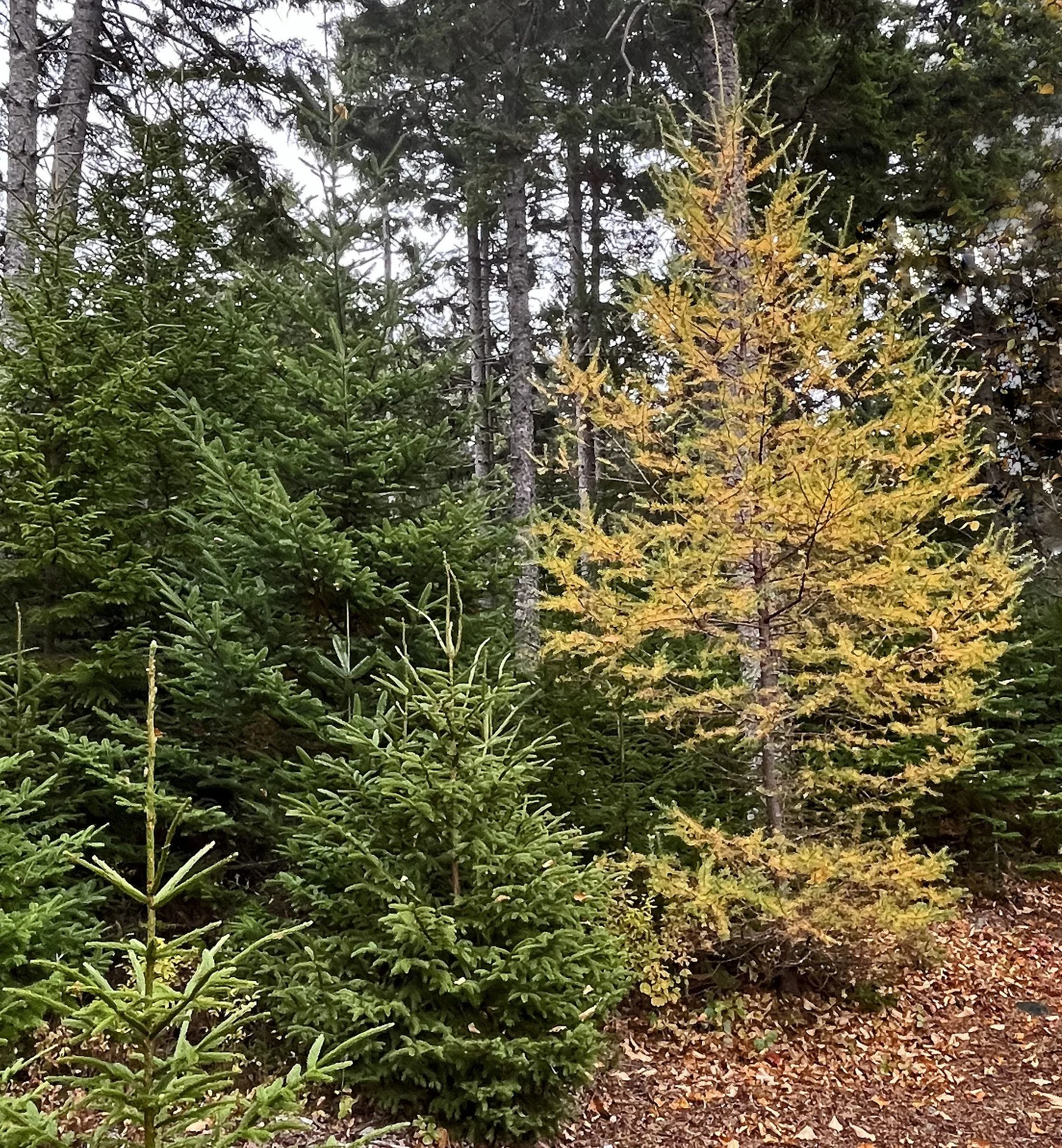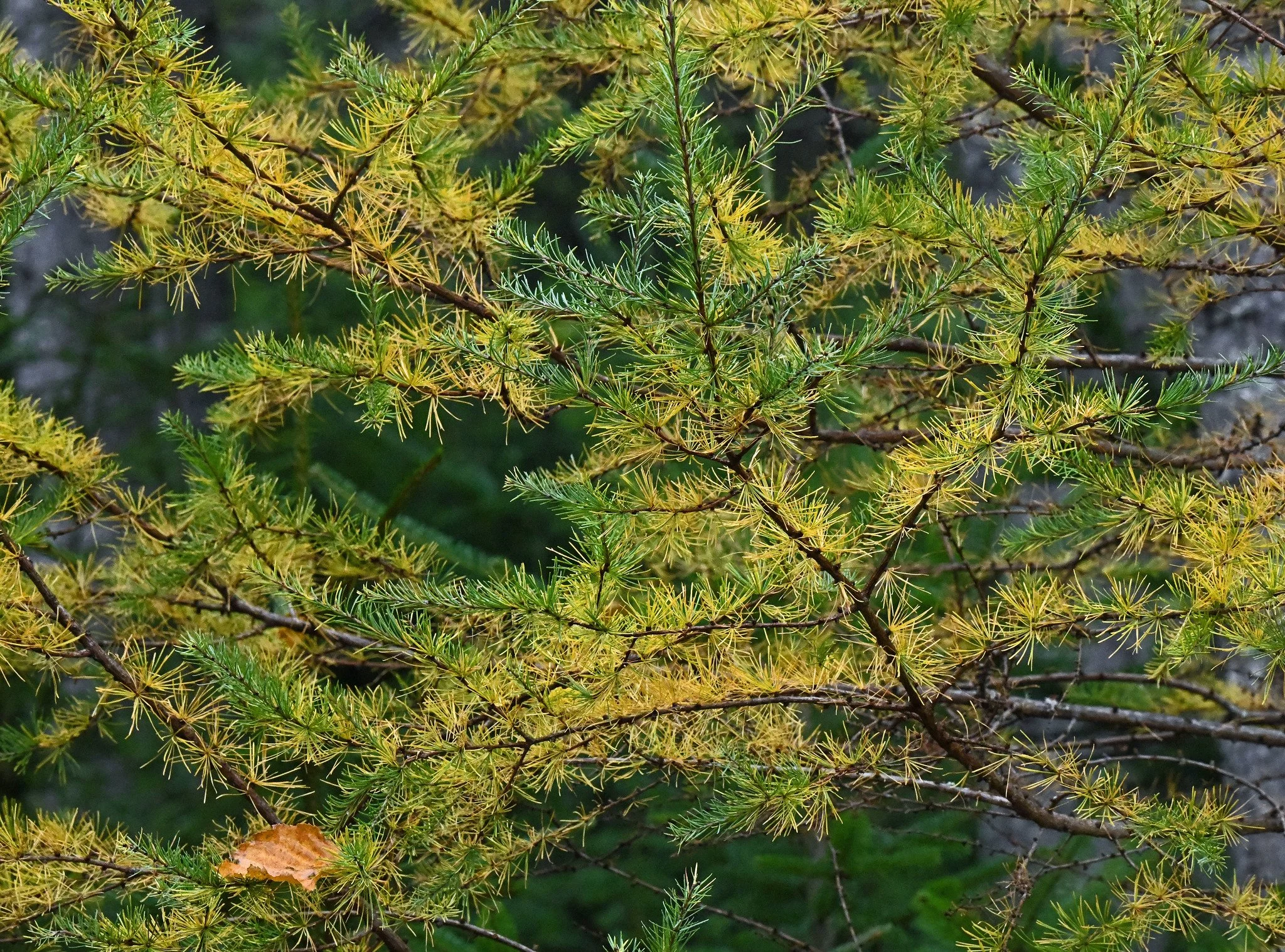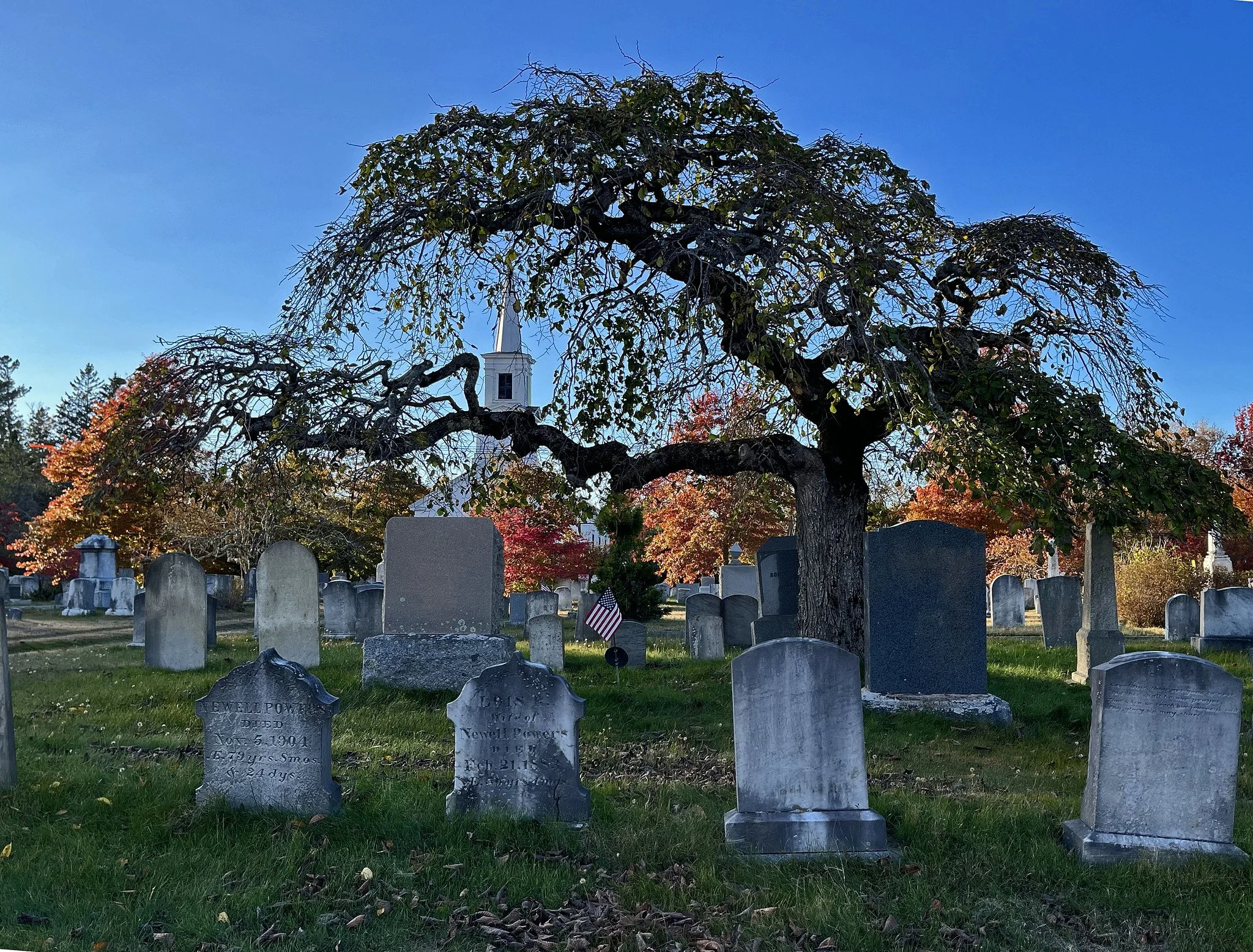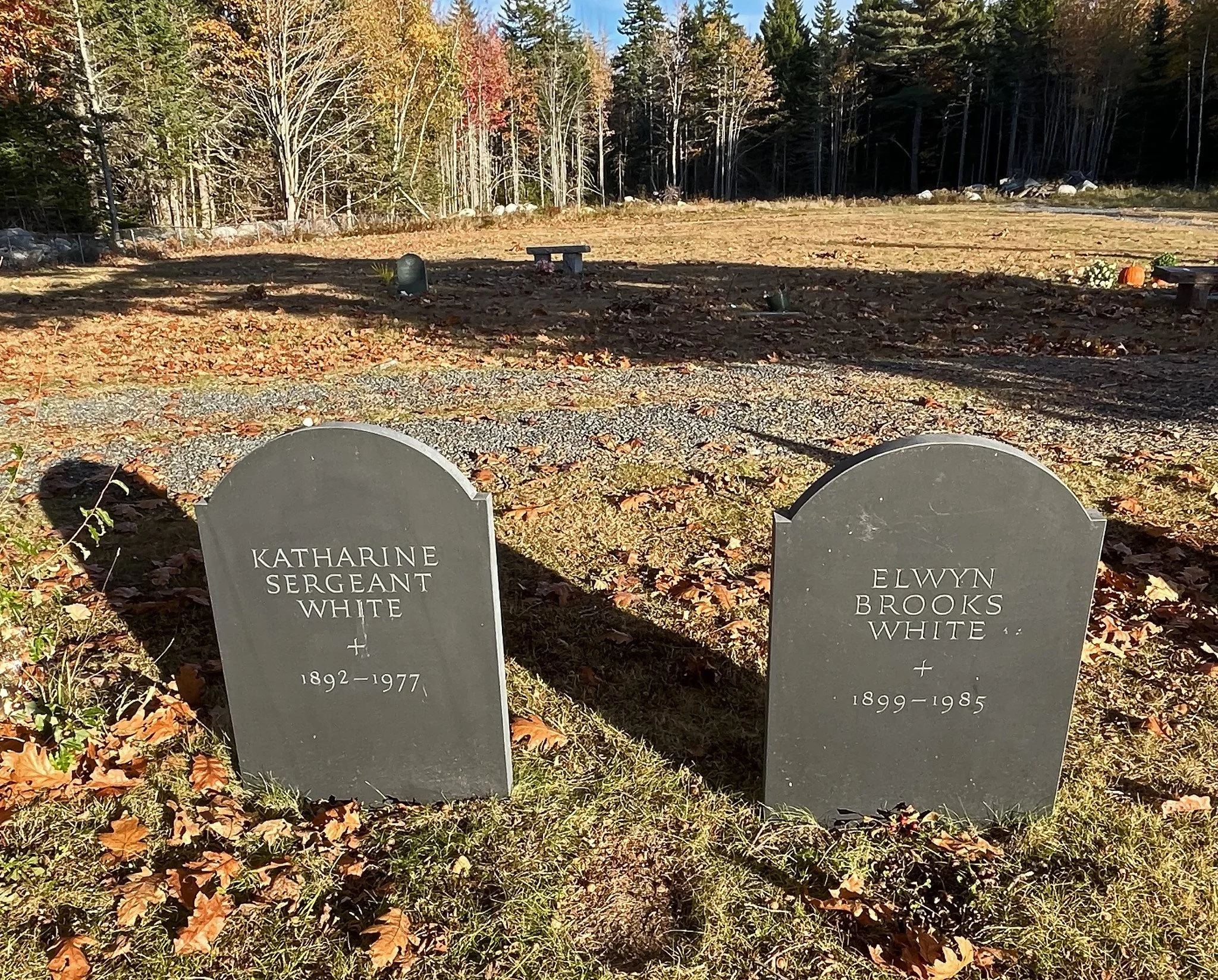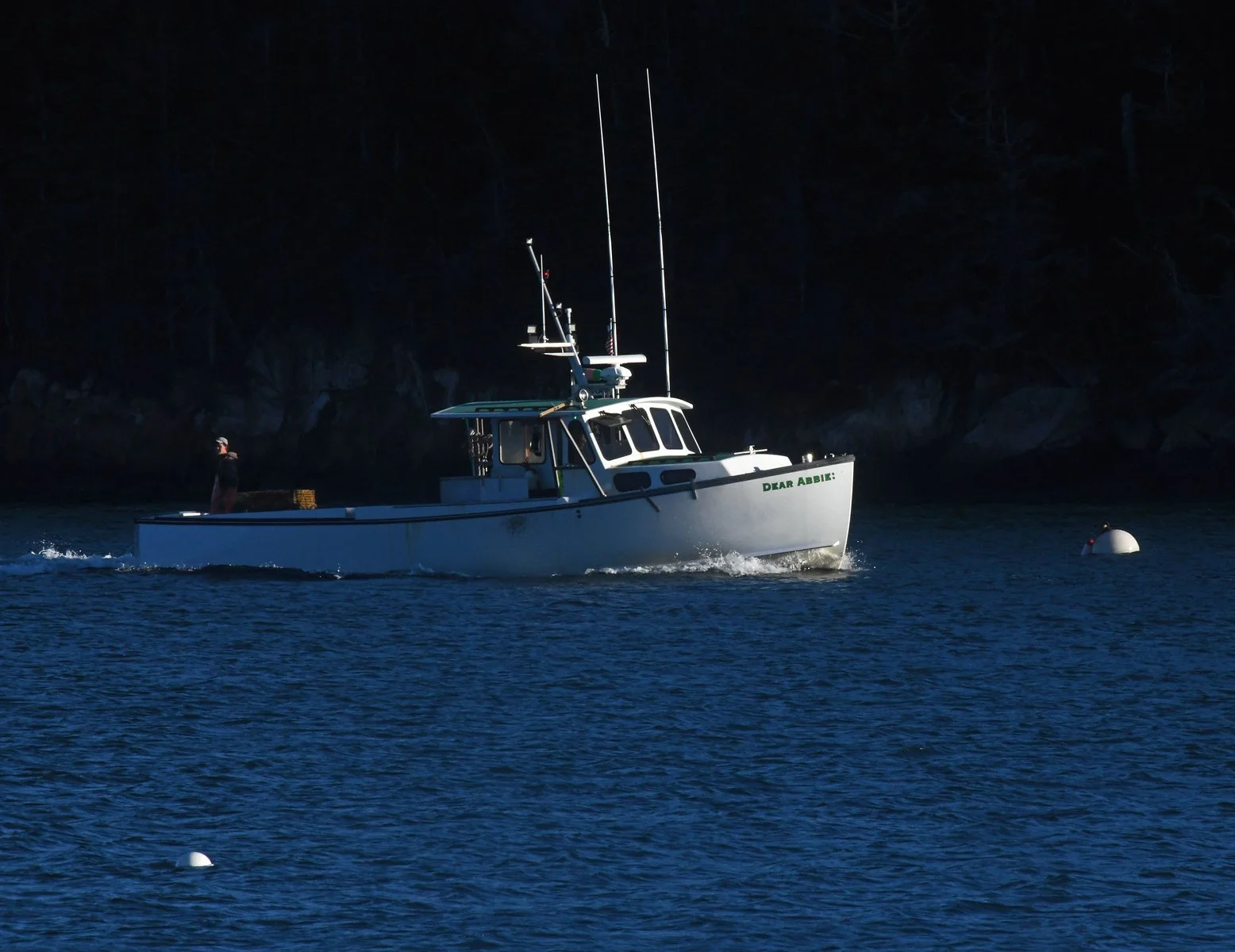Here you see a furtive tree in yesterday’s rain. It has decided to reveal its hiding place among spruce and balsam fir trees by turning yellow and losing its needles.
As many of you know, it’s a tamarack tree, named after the Algonquin Tribe’s word for “snowshoe wood.” You might also know the tree by its Abanaki Tribe name (“hackmatack”) or its Latin and German-derived name (“larch”).
The tamaracks seem to be late coming out this year. If I remember correctly, in prior years, many more were in full incandescence or devoid of needles by this time. Perhaps our fall drought is delaying the process.
Tamaracks are green-needled in the spring and summer, and often are impossible to distinguish at a distance when they arise among spruce and fir trees. Those other trees are coniferous and so are tamaracks; that is, they all produce and drop cones for propagation of their species.
However, tamarack branches are thinner and more wiry than those of their cousins and – most important – they’re not evergreen. They’re deciduous and, in the fall, their true nature as imposters is disclosed when they turn yellow and drop their needles like golden rain.
(Images taken in Brooklin, Maine, on October 30, 2024.)

